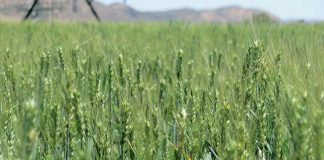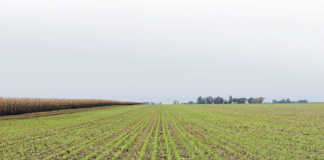
Herbicide resistance is increasing, and farmers are being forced to find new ways to control weeds. “The time for quick fixes is over,” says Pieter le Roux, a regional manager at Villa Crop Protection, who spoke at a recent VinPro workshop held near Paarl. “From now on, farmers will have to do everything feasible to protect those active ingredients that still work.”
Every weed management programme should aim to reduce the weed seed reserve (seedbank), explains Le Roux.
Farmers should also not count on the introduction of new herbicides to save the situation. Developing a new herbicide based on new chemistry is a highly expensive and difficult process. Moreover, most of the ‘new’ products developed so far are simply a combination of active ingredients already available on the market, he notes. These products do not really increase rotation options.
Le Roux offers the following pointers on improving the efficiency of herbicides:
Use combinations
It was once common practice to rotate herbicides according to their mode of action, but this is proving ineffective. For example, 20 years ago, ryegrass (genus Lolium) developed resistance to glyphosate. Today, it is resistant to paraquat as well, giving farmers fewer options when rotating active ingredients. In turn, the risk of resistance developing against the active ingredients that still work is greatly increased. As a result, farmers are now combining products to obtain the desired effect.
Prof Andy Cairns, lately with the Department of Agronomy at Stellenbosch University, has found that therbuthylazine helps to break down potential paraquat resistance and improve paraquat efficacy. With this in mind, Le Roux suggests that farmers use a therbuthylazine-paraquat combination on ryegrass at the three- to four-leaf stage, and a combination of glyphosate and selective grass herbicides in August/September.
Paraquat has no effect on tall fleabane (Conyza sumatrensis) and Le Roux urges farmers not to waste their money applying it to this weed. Instead, he suggests a glyphosate- therbuthylazine combination when the plants are about ankle high. A diquat-therbuthylazine combination can be used if the plants are between ankle and knee height, before seed formation.
Le Roux cautions, however, that applying combinations is only a temporary solution, and farmers should vary combinations to ensure they work for as long as possible.

Couch grass can only be controlled effectively during the active growing phase.
Beware of resistance risk
“Dr Chris Preston from the University of Adelaide recently asked me how long we’d been using one specific combination,” says Le Roux. “When I told him we’d been using it for only two or three years, he estimated we had another three years [of use] left.” Weeds usually develop resistance to selective grass herbicides, such as dims, fops and therbuthylazine, within five to six years.
Selective grass herbicides are ideal for controlling summer grasses such as crab finger (Digitaria sanguinalis) and grasses belonging to the Cenchrus genus in broadleaf crops, such as grapes and tomatoes, in late spring or early summer.
By contrast, therbuthylazine no longer has any effect on summer grasses.
Adjuvants improve the efficacy of products
An adjuvant such as Villa 51 or Summit Super should always be used with paraquat. The adjuvants destroy the wax layer on the leaves, allowing for easier absorption of paraquat. An ammonium sulphate adjuvant, such as Velocity, should be used with glyphosate and selective herbicides; it helps prevent the herbicide molecules from reacting with salts in the water, improving their efficacy.
Get the pH right
Routinely test the quality and pH of the water before it is used for dilution to ensure the optimal performance of a herbicide. Bear in mind that with some herbicides, it is necessary to add a pH buffer. With MCPA, for example, failure to first correct the pH will cause this product to turn into a gel.
Timing is everything
Always use a herbicide according to the instructions, at the time indicated, and under optimal spraying conditions. For example, therbuthylazine is a good pre- and post-emergent herbicide on broad leaf weeds, but has very little effect on grass.
MCPA offers the most effective control of blue echium (Echium vulgare), but take care when using it because of its high volatility. Apply it in large droplets at 4l/ ha to 5l/ ha, diluted in 300l/ ha to 400l/ ha water. It is best to spray early in the morning when there is little convection. MCPA also works well on narrow-leaved ribwort (Plantago lanceolata).
The secret behind controlling couch grass (Elymus repens) is to time the treatment to when the weed is in the active growing phase, with a dark green colour. Loosen the couch grass with a grub action to stimulate growth if the grass is brown. The best time for control is February/March with a grass herbicide, or October with glyphosate.
Mechanical means
Ultimately, says Le Roux, farmers can no longer rely solely on herbicides to wipe out resistant seeds. Suitable mechanical practices are also needed to reduce herbicide dependence, while those ‘silver bullet’ herbicides should be kept for when it is really necessary. Crops could be planted between vineyard rows to suppress weed growth, while chemicals could be restricted to the vineyard rows. In areas with severe herbicide resistance, the only option might be to physically destroy resistant plants, says Le Roux.
Phone Pieter le Roux of Villa Crop Protection at 021 873 6892 or email him at [email protected].













